Hawaii is one of the most visited tourist destinations known for its lush tropical setting. White sandy beaches, active volcanoes, mesmerising sunsets, and breathtakingly beautiful marine life are some of the idyllic symbols of the archipelago – Hawaii is home to the world’s most active volcanoes: Mauna loa and Kilauea.
Its climate remains virtually unchanged throughout the archipelago, which has given rise to a unique ecosystem. The Hawaiian ecological setting is incomparable, and the archipelago has been given biogeographic province status in numerous global classifications as well.
You might be interested in Hawaiian Islands Map
What Is An Ecosystem?
In the simplest sense, an ecosystem is the environment of a region and its inhabitants, both plant and animal species. An ecosystem contains life and also a boundary through which the input and output of energy can be quantified.
How Many Ecosystems Are There In Hawaii?
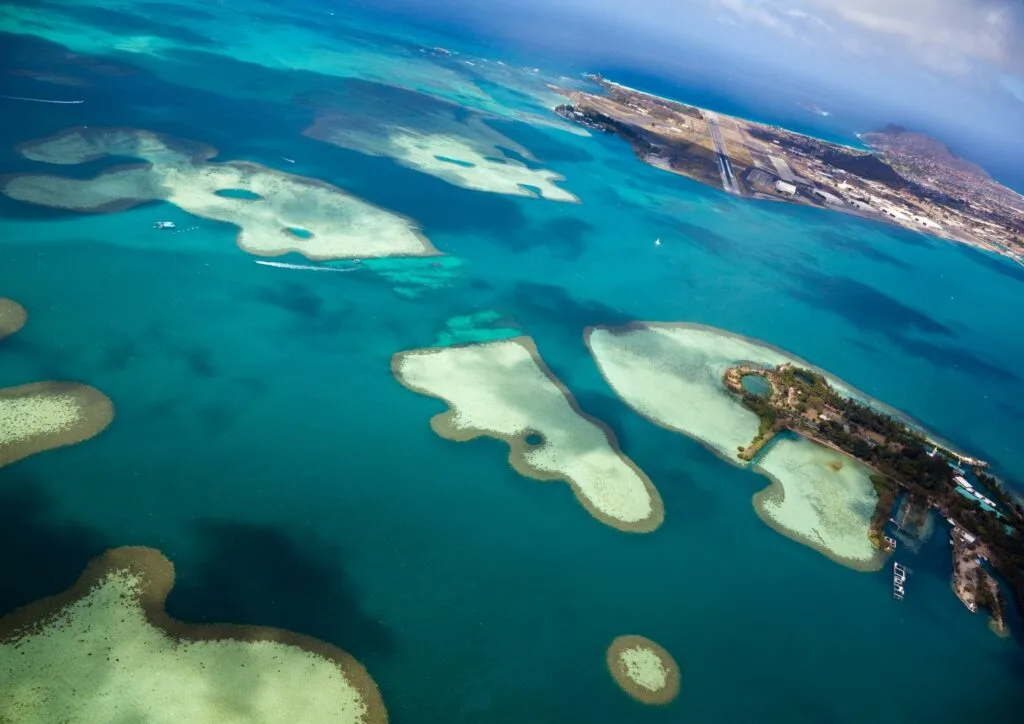
Hawaii has numerous ecosystems and eight different climate zones. Lowland dry forests, the coastal strands, wet rain forests, moderately humid forests, lakes, marshes, wet rain forests, ponds, swamps, freshwater streams, estuaries, alpine stone deserts, sub-alpine parklands, and bogs are all part of the Hawaiian ecosystem.
Hawaii also has a unique coral ecosystem with nearly 1,250 species thriving among the reefs; scientists also regularly discover new species among the corals and at other locations of the archipelago.
What Is Nature Like In Hawaii?
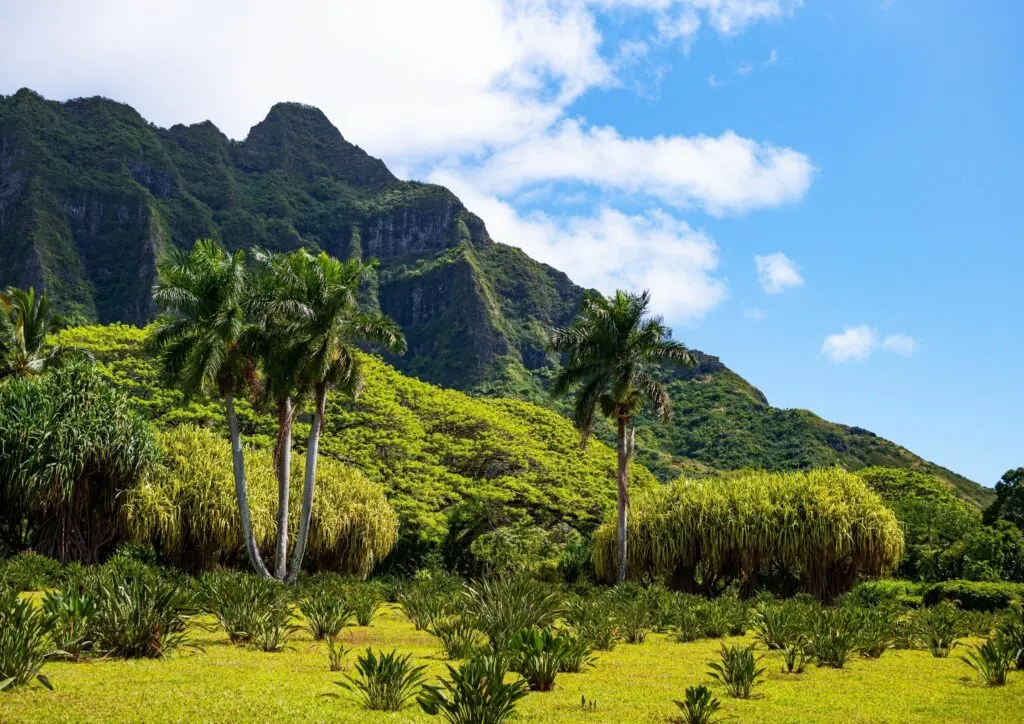
Hawaii is blessed with verdant and diverse plant life. Around 3,000 plant species are found on the islands, ranging from trees to flowers to ferns; some of the flowers seen in Hawaii cannot be found anywhere else in the world.
This unique plant life has created a nourishing habitat for wildlife. The state is also remote and isolated, which is part of the reason for its unparalleled plant life – and it is also why Hawaii only has two native mammals: the Hawaiian Hoary Bat and the Hawaiian Monk Seal.
Most of the animals and plants in Hawaii were brought in by explorers about 1,500 years ago. Thanks to Hawaii’s remote location, these animals and plants have been thriving without any competition or danger, which also means that they never developed natural defences to fend off predators.
Consequently, now most denizens of the Hawaiian wilderness face the danger of extinction because new plant species and animals are being introduced. But fortunately, Hawaii has exacting standards when it comes to the type of animals and plant species allowed on the islands.
As for the forests, the only tropical rainforest in the United States is found here in Hawaii. Around 48 forests can be found, with about 175 tree species. Koa tree and ‘Ohi’a lehua are the most commonly seen native trees, and the yellow hibiscus is the official flower – which is about a foot in diameter.
Hawaiian Terrestrial Ecosystem
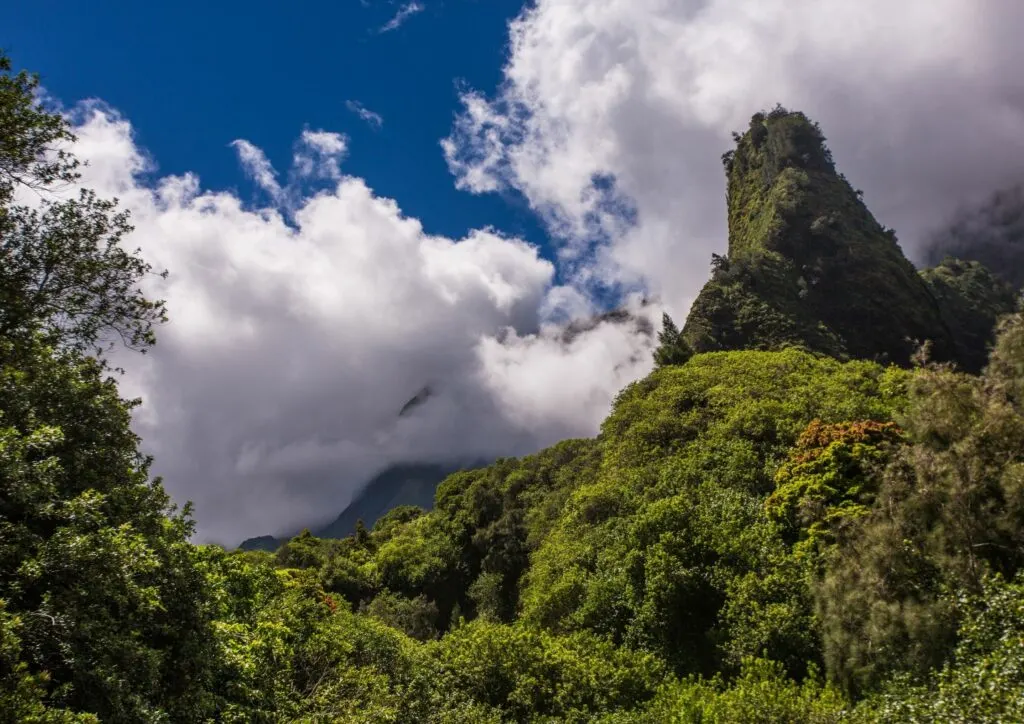
There are two types of islands in the world: continental islands and oceanic islands. Continental islands are connected to a continent, but oceanic islands are not connected to a continent. The Hawaiian Islands are oceanic.
Even though some have speculated that they might have been continent islands at some point, oceanographic research dictates that the Hawaiian Islands are oceanic and have always been so.
It’s important to remember this fact as it has affected Hawaii’s cultural and biological evolution – Hawaii’s geographical isolation is its most unique feature.
The islands are comparatively smaller and contain several biologic areas.
Hawaiian Rain Forest
Rainforests can be found on main islands in high-rainfall regions, with an elevation of 1,600 metres or more. Canopies of these forests are about 20 metres tall.
A variety of flora thrives in the Hawaiian rainforests. The colours of the foliage vary from bright green to grey to dark, and the colour of flowers varies from light coral red to crimson.
You can also find a range of endemic trees, shrubs, and ferns in these rainforests. Euphorbiaceae, Bobea timonioides, Rubiaceae, Nyctaginaceae, Araliaceae, Dryopteridaceae, Myrsinaceae, and Athyriaceae are a few of the endemic plant species that grow in the rainforests.
Hawaiian Lowland Dry Forest
Lowland dry forests are found in the dry areas of the island – these regions don’t experience much rainfall. The islands with an elevation of approximately 1,500 are home to lowland dry forests. The canopies usually vary from 4 metres to 20 metres.
Most of the woody plants found here are evergreen, apart from the summer plant species like Fabaceae, Euphorbiaceae, and Araliaceae. These forests are extremely diverse, and the best examples are seen on Oahu and Kauai.
Hawaiian Lowland Dry Shrublands
Rocky areas found on all the main islands, except Kahoolawe and Niihau, are home to natural shrublands; the altitude of these areas comes up to about 600 metres.
A rich diversity of plants, trees, shrubs, and vines are found in shrublands; however, the composition can vary according to the climate and geographical characteristics.
Hawaiian Acacia koa Forest
Found in lowlands, with an altitude that varies from 300 metres to 2,300 metres, the Acacia koa forests are characterised by the abundance of the Acacia koa tree, also known as Fabaceae.
Cool sub-alpine conditions define the climate in these areas.
Apart from the dominant tree species Fabaceae, you can also see other related tree species such as Bobea elatior, Diospyros hillebrandii, Psychotria mariniana, Gardenia remyi, and Santalum freycinetianum.
Hawaiian Montane Cloud Forest
The constant presence of fog is the defining feature of the montane cloud forests. These forests are limited to an altitude varying from 1,000 metres to 1,900 metres.
Stunted and gnarled trees covered in lichens and mosses are commonly seen in montane cloud forests.
Metrosideros polymorpha, an endemic tree, is the main canopy tree, and the other tree species include Fabaceae, Cheirodendron fauriei, Hedyotis terminalis, Myrsine lessertiana, and Cheirodendron trigynum.
Hawaiian Montane Bogs
Montane bogs occur in extreme rainfall areas like high plateaus; the best two examples are the Alakai swamp on Kauai and the highest areas of Maui.
For these montane bogs to occur, the biosphere should receive a high rainfall – some regions experience rainfalls exceeding 12 metres per year.
The vegetation of montane bogs generally consists of sedges like Rhynchospora lavarum, Sphagnum moss, and Oreobolus furcatus; and endemic sedges like Carex montis-eeka.
Hawaiian Savanna
Open savannas mainly occur on the Big Island, but some can be found on East Maui too. These parklands are seen on high lave slopes, just above montane forests.
Santalum haleakalae and Chamaesyce olowaluana are commonly associated with Hawaiian savanna lands; however, the regions provide a thriving ground for shrubs too.
Hawaiian Coastal Vegetation
The coastal vegetation in Hawaii occupies a narrow region of about 100 metres inland; it can extend further inland if the strong sea winds push sand dunes and sea spray into the lowland area.
Coastal settings are usually dry, but some leeward areas can experience rainfall.
The coastal ecosystem can be found on almost all the Hawaiian main islands, including Maui, Big Island, Kahoolawe, Lanai, Oahu, and Niihau. The Hawaiian coastal vegetation consists of shrublands, grasslands, and forests.
Related: What Animals Live in Hawaii?
What Are The Types Of Coral Reefs In Hawaii?
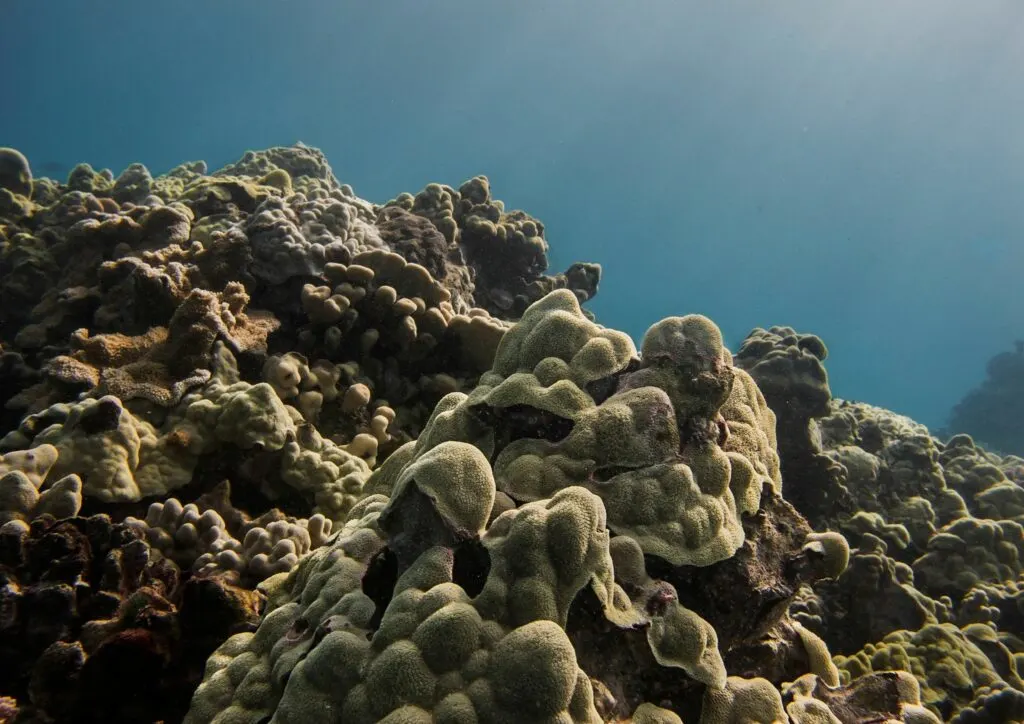
Coral reefs are among the most essential ecosystems in the world, and the Hawaiian coral reefs are a spectacular sight admired by snorkellers and divers.
The reefs are created by small marine animals, and they have been developing for thousands of years. A diverse range of marine animals takes shelter among Hawaiian reefs.
Three main reefs can be seen in Hawaiian waters;
Fringing Reefs
The Hawaiian coral ecosystem mainly consists of fringing reefs. They can be seen close to the shore, expanding outwards from the land. Hanauma Bay and Kaloko-Honokōhau National Historical Park are two places where you can see fringing reefs.
Barrier Reefs
The growth of these reefs is found away from the shore, growing further into the deep waters. The southern side of Molokai and Kaneohe Bay are two examples of barrier reefs.
Atoll Reefs
Some fringing reefs grow outward from a sunken volcanic island, creating atoll reefs. The lagoon in the centre and its circular shape are the two main characteristics. Kure Atoll and the French Frigate Shoals are two examples of atoll reefs.
Hawaiian Ecosystem Problems
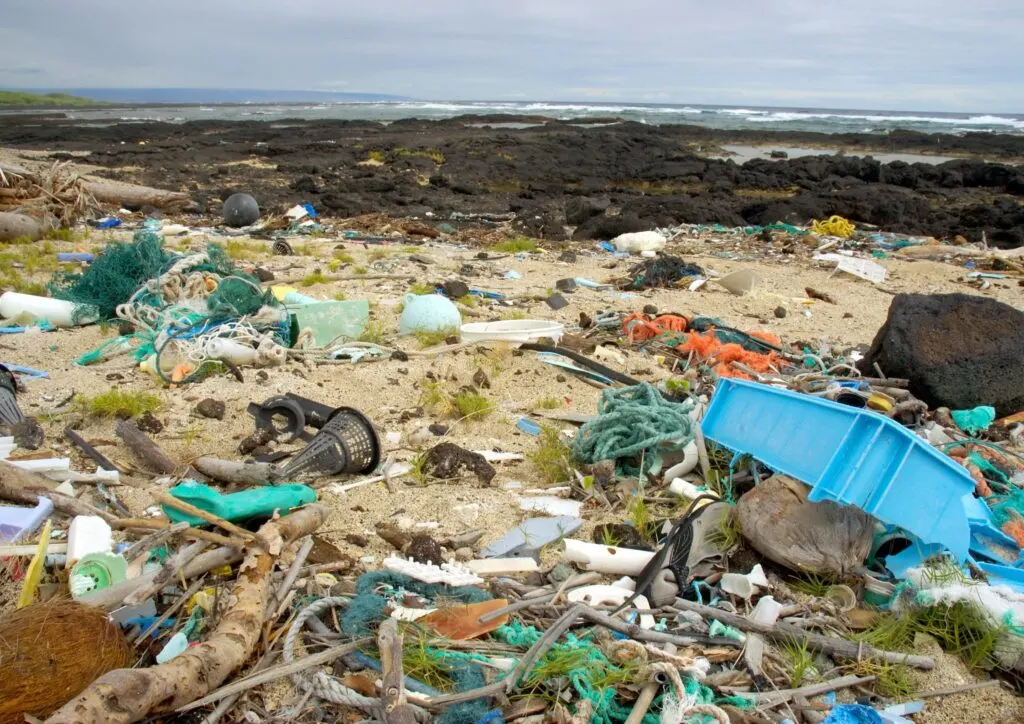
The most serious ecosystem problem faced by Hawaii is the invasive species. Loud tree frogs, Miconia weed, and mosquitoes have been causing major issues in the Hawaiian Islands.
Furthermore, contamination of water, both saltwater and groundwater, threatens the Hawaiian ecosystems.
The global climate crisis affects Hawaii too. Rising temperatures, droughts, and rising sea levels are a few challenges caused by climate change.
How Do Humans Harm The Hawaiian Ecosystems?
The Hawaiian Islands were thriving without the presence of humans for thousands of years. Due to its isolated location, the endemic plant species and animal species were able to prosper without the danger of invasive species.
However, humans have been introducing alien plant and animal species, endangering the endemic species. Clearing out forested areas for development has also violated the Hawaiian ecosystems.
What Are The Conservation Efforts?
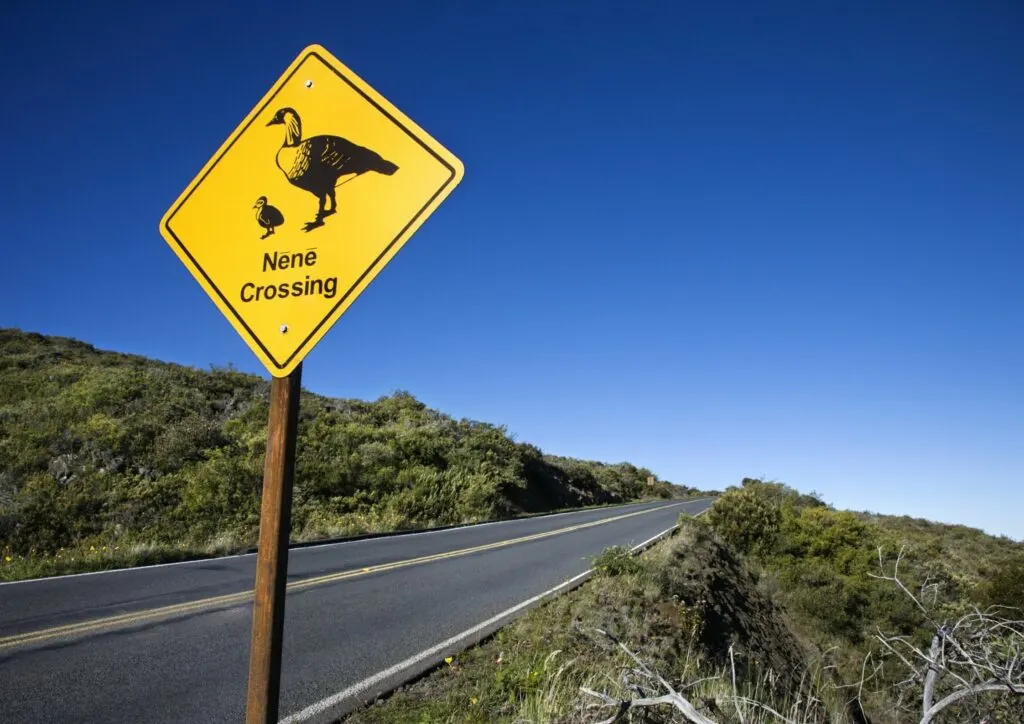
The National Fish and Wildlife Fund’s Hawai’i Conservation Program endeavours to protect the ecosystems and conserve the near-extinct Hawaiian species.
Also, about 17,000 acres of land are under the protection of the Land Trust; the conservation of these lands will ensure the continued existence of clean water, clean air, and the amazing views the archipelago is known for.
The Hawaii Invasive Species Council on the other hand works tirelessly to remove invasive species from the islands. Furthermore, The Hawaii Conservation Alliance and The Nature Conservancy of Hawaii are two other bodies that work to preserve the ecosystems.
How Can Tourists Help The Conservation Efforts?
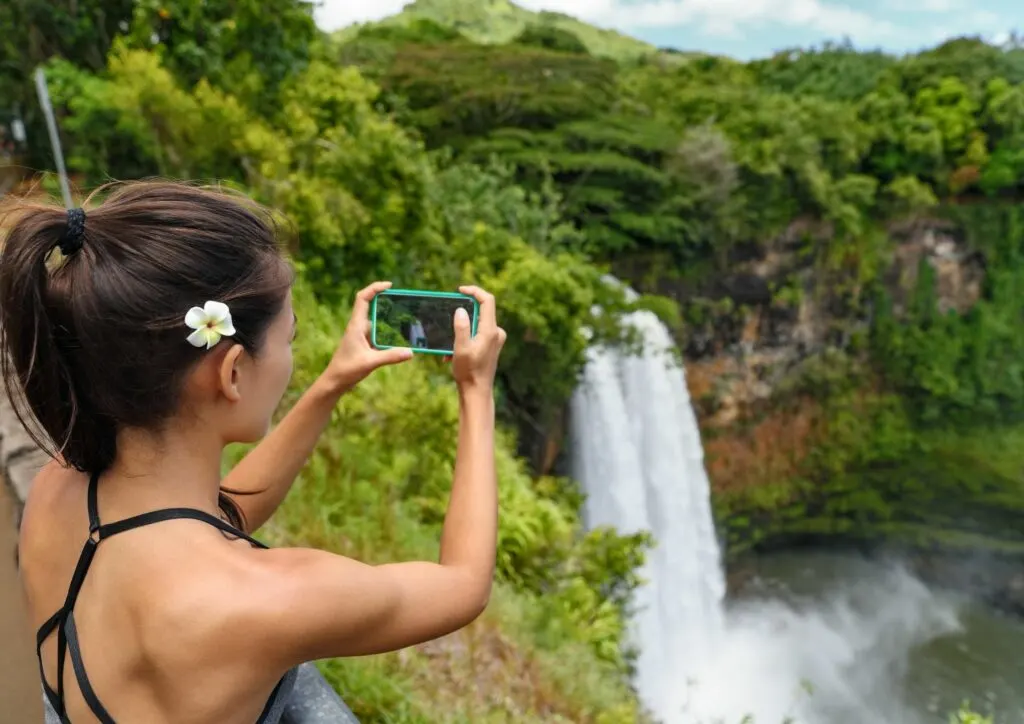
Ecotourism in Hawaii has seen a rise in recent years. Tourists can do a few effortless things to help Hawaii’s many conservation efforts.
You can start by using reef-safe sunscreen. Sun lotions usually contain substances that harm corals and fish. The reef-safe sunscreen, however, doesn’t include any of these harmful ingredients.
Tourists need to resist the temptation to touch wildlife, especially sea turtles. Touching sea turtles exposes them to bacteria and makes them susceptible to diseases. Also, don’t litter the beaches; Hawaiian beaches are the epitome of tropical beauty, so make sure you don’t leave a trail of trash.
You should also consider supporting certified eco-friendly establishments; they are known to donate a portion of their profits to conservation efforts. What’s more, you should also think about adding some eco-tourism activities to your list of things to do.
For instance, if you are thinking of snorkelling, choose the Molokini Crater for your adventure. Hiking at Hakalau Forest Wildlife Nature Reserve, trailing through Hawaii Volcanoes National Park, and ziplining are a few other ecotourism activities you can enjoy.

